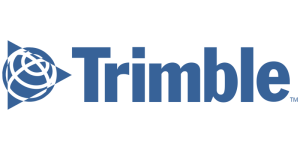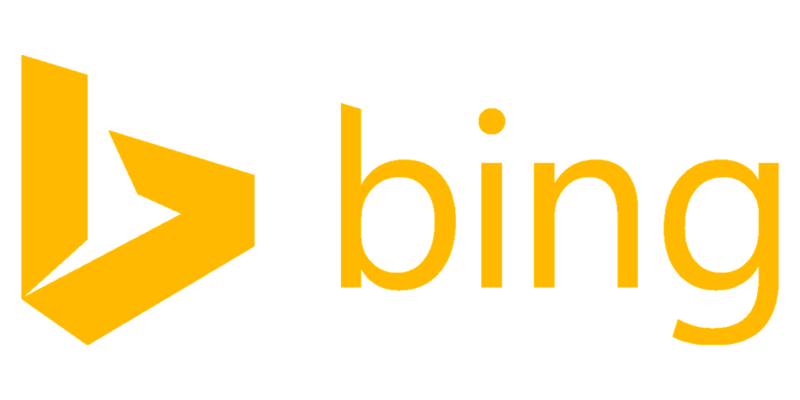How may Google’s reverse image search affect SEO in 2024?
In the ever-evolving realm of digital marketing, search engines like Google continually redefine the landscape with innovative tools and features. One such feature that has been gaining traction is Google’s reverse image search. As we look toward 2024, JEMSU, a leader in search engine marketing, delves into the implications this technology may have on SEO strategies and practices.
Google’s reverse image search allows users to upload an image to find content related to that picture across the web. This seemingly simple function has profound effects on how content is discovered, attributed, and ranked. It opens up new channels for visibility and presents fresh challenges for SEO experts to ensure their images, and thus their websites, remain prominent in search results. JEMSU stays at the forefront of these developments, guiding clients through the intricacies of image optimization and the novel ways through which reverse image search can influence search engine results pages (SERPs).
As 2024 approaches, it’s crucial for businesses to anticipate how this tool can be leveraged to enhance their online presence. JEMSU’s expertise in digital advertising positions it uniquely to analyze the trends and adapt SEO strategies accordingly. In this article, we will explore the potential impact of Google’s reverse image search on SEO, discussing how it can shape content visibility and what measures can be taken to harness its power for improved search engine performance. With an eye on the future, JEMSU is dedicated to ensuring that clients not only keep pace with these changes but also capitalize on them to drive traffic and growth.
Table of Contents
1. Impact on Image Optimization for SEO
2. Changes to Visual Content Discovery and Indexing
3. Influence on Duplicate Content Detection and Management
4. Effects on Link Building Strategies through Image Sharing
5. Role in Enhancing User Experience and Engagement
6. Implications for Local SEO and Visual Search Trends
7. FAQs
Instant SEO Checker + Score & Report
Enter the URL of any landing page to see how optimized it is for one keyword or phrase...
Impact on Image Optimization for SEO
As Google continues to refine its reverse image search capabilities, the importance of image optimization for SEO is likely to become increasingly critical. JEMSU, as a forward-thinking digital advertising agency, understands the pivotal role that images play in a comprehensive SEO strategy. In the landscape of 2024, we anticipate that images will not just complement the textual content but also serve as standalone entry points for users searching the web.
The evolution of reverse image search technology may require webmasters and SEO professionals to pay greater attention to factors such as image file names, alt text, and surrounding content to ensure that images are fully optimized for search engines. For example, an image with a descriptive, keyword-rich file name and accurate, context-relevant alt text is more likely to rank well in both traditional and reverse image searches.
Moreover, with advancements in machine learning and AI, Google’s algorithms are expected to become more adept at understanding images contextually. JEMSU recognizes that providing clear, concise, and relevant information about an image will help Google’s AI to categorize and index images more effectively. This can lead to more precise search results and, consequently, higher traffic for websites that have optimized images.
In terms of stats, it’s been observed that websites with properly optimized images are likely to experience an increase in organic traffic. For instance, images that appear in Google’s image search results can drive clicks back to the website, not only enhancing visibility but also potentially boosting conversion rates.
Furthermore, as Google’s reverse image search becomes more sophisticated, it may start to impact the way users interact with visual content on the web. An analogy to consider is how the advent of high-definition television changed viewers’ expectations for visual quality; similarly, as users become accustomed to finding high-quality, relevant images with ease, their expectations for online visual content will increase.
JEMSU aids businesses in staying ahead of the curve by ensuring their visual content is not only eye-catching but also meticulously optimized for search engines. By doing so, businesses can leverage the full potential of their imagery to improve their online presence and searchability. As an example, an e-commerce site that optimizes its product images for reverse image search will likely encounter a higher rate of discovery by potential customers, leading to increased sales.
Understanding the growing importance of visual search, JEMSU empowers its clients to enhance their SEO efforts through strategic image optimization, staying in tune with the shifting algorithms and user search behaviors forecasted for 2024 and beyond.
Google Ads Success Example
The Challenge: The Challenge: Increase new dental patients with better Google Ads campaigns.
Changes to Visual Content Discovery and Indexing
Google’s reverse image search is a powerful tool that has been evolving steadily, and as we look towards 2024, its impact on SEO is expected to become increasingly significant, particularly in the realm of visual content discovery and indexing. As a digital advertising agency, JEMSU understands the importance of staying ahead in the SEO game, and adapting to these changes is crucial for our clients’ success.
In the context of changes to visual content discovery and indexing, Google’s sophisticated algorithms are likely to further refine the way images are crawled, categorized, and displayed in search results. With advancements in AI and machine learning, Google’s ability to understand and interpret images is expected to reach new heights. This could mean that images will no longer be mere supplements to text on a webpage but could start to carry more weight in the SEO hierarchy.
For example, a business that specializes in outdoor gear could see a significant shift in web traffic by optimizing their high-quality images of camping equipment for reverse image search. As users search for a specific type of tent or backpack through images, Google could direct them to the business’s website where that product is featured, thereby improving visibility and potentially increasing sales.
Moreover, JEMSU recognizes that Google’s enhanced image indexing could lead to a more sophisticated visual search ecosystem. Users might be able to snap a picture of an item they are interested in and instantly find similar products or related content, making image optimization a critical aspect of SEO strategy.
To illustrate the importance of adapting to these changes, consider the analogy of a library. In the past, finding a book in a library without a proper cataloging system would have been a daunting task. Similarly, without optimized images, finding relevant visual content on the vast internet could be equally challenging. As Google improves its ‘cataloging system’ for images, JEMSU ensures that our clients’ visual content is appropriately tagged, described, and optimized to be easily discoverable.
As for stats, a study by Moz shows that posts with images receive 94% more views than those without. This statistic highlights the importance of visual content in engaging users and improving SEO performance. With Google’s reverse image search becoming more influential, JEMSU is poised to help our clients leverage this tool to enhance their online presence and ensure their images rank prominently in search results.
In conclusion, the changes to visual content discovery and indexing are set to play a pivotal role in SEO strategies. JEMSU is committed to helping our clients navigate this evolving landscape, ensuring their visual content is optimized not only for today’s standards but also for the future advancements that Google’s reverse image search may bring.
Influence on Duplicate Content Detection and Management
As we look ahead to 2024, Google’s reverse image search is likely to have a significant impact on the way duplicate content is detected and managed. At JEMSU, we recognize the importance of unique content for a robust SEO strategy, and this extends to visual elements as well. With the advancement of Google’s technology, it’s becoming increasingly easy for algorithms to scan the web for images that are identical or substantially similar to one another. This means that websites that reuse images from other sources without proper attribution or modification may be penalized for containing duplicate content.
The influence of reverse image search on SEO can be compared to a net cast in the ocean, designed to catch only those fish that meet certain criteria. Just as the net filters through countless fish to find the ones that are either too small or the wrong species, Google’s reverse image search sifts through the vast digital ocean to identify images that are not original. This analogy highlights the precision with which Google can pinpoint and address duplicate visual content.
For businesses like JEMSU, the implications are clear. We must ensure that the images used on our clients’ websites are either original or properly licensed and attributed. Moreover, we must also consider the use of watermarks or other unique identifiers to protect our clients’ original images from being used without permission elsewhere on the web.
By leveraging reverse image search, Google can provide a more authentic and high-quality user experience. For instance, if a user is searching for an image of a specific product or piece of artwork, they’re more likely to find the original source rather than a copy, which can lead them directly to the creator’s or retailer’s website. This can reduce the visibility of websites that do not adhere to best practices for managing visual content.
In the realm of SEO, where content is king, JEMSU continuously emphasizes the value of originality, not just in text but in all forms of media. As reverse image search technology evolves, it will require digital marketers to be even more vigilant in their content creation and curation strategies. The goal is not merely to avoid penalties but to establish and maintain a reputation for providing valuable, unique content that stands out in a crowded digital landscape.
SEO Success Story
The Challenge: The Challenge: Design an SEO friendly website for a new pediatric dentist office. Increase new patient acquisitions via organic traffic and paid search traffic. Build customer & brand validation acquiring & marketing 5 star reviews.
Effects on Link Building Strategies through Image Sharing
Google’s reverse image search capabilities could have a significant effect on link building strategies through image sharing as we head into 2024. At JEMSU, we understand the importance of utilizing every tool at our disposal to enhance our clients’ SEO performance, and the nuanced changes in image search technology are no exception. Reverse image search enables webmasters and content creators to locate instances of their images across the web, which can lead to opportunities for requesting credit through backlinks, a classic and effective SEO strategy.
For instance, a blogger or a website owner who uses a unique infographic created by a JEMSU client might be found through a reverse image search. This presents JEMSU with a prime opportunity to reach out to the blogger to secure a backlink, which not only improves the visibility of our client’s website but also contributes to its authority and ranking on search engines. The old adage ‘a picture is worth a thousand words’ rings true in SEO, as a single image can lead to numerous backlink opportunities when shared and properly credited, enhancing the overall link building strategy.
Moreover, the proliferation of image sharing on various platforms such as Pinterest, Instagram, and industry-specific forums further complicates the tracking of image usage. As these platforms continue to grow in popularity, JEMSU stays ahead of the curve by leveraging reverse image search to monitor where and how images from our clients are being shared. This proactive approach allows us to manage and optimize the digital footprint of visual content, ensuring that every shared image works as a potential beacon drawing in quality backlinks.
The implications for SEO are vast, considering that backlinks remain one of the most critical factors in a website’s search engine ranking. A study by Moz indicates that backlinks are among the top factors considered by Google’s algorithm when determining the relevance and authority of a website. As such, JEMSU places a high emphasis on tracking image shares to maximize the impact of visual content on our clients’ link building strategies.
In essence, as reverse image search technology continues to improve, it becomes an increasingly valuable asset in the SEO toolkit. It allows agencies like JEMSU to protect and promote our clients’ visual assets, ensuring that every image is not only seen but recognized as a cornerstone of a robust, forward-thinking link building strategy.
Jemsu has been a great asset for us. The results have grown at strong positive linear rate. They have been extremely accessible, flexible, and very open about everything. Natalya is a star example of how to work with your accounts to drive them forward and adjusts to their quirks. Jaime is able to clearly communicate all of the work that is being done behind the scenes and make sure that all of my team is understanding.
I couldn’t be more pleased with my JEMSU Marketing Team!
Julia, Tamara, Joelle and Dally have exceeded my expectations in professionalism, creativity, organization, and turn around time with my Social Media Management project.
I have thoroughly enjoyed sharing my journey with this team of empowered women!
Thank you JEMSU! Your team designed and launched my new website, and developed strategies to drive traffic to my site, which has increased my sales. I highly recommend your Website & SEO Agency!
Jemsu has always been professional and wonderful to work with on both the SEO and website design side. They are responsive and take the time to explain to us the complicated world of SEO.
Jemsu is an excellent company to work with. Our new website blows away our competition! Unique, smooth, and flawless. Definite wow factor!
The folks at JEMSU were excellent in designing and launching our new website. The process was well laid out and executed. I could not be happier with the end product and would highly recommend them to anyone.
Jemsu is a great company to work with. Two prong approach with a new site and SEO. They totally redesigned my website to be more market specific, responsive, and mobile friendly. SEO strategy is broad based and starting to kick in. My marketing will also be adding Facebook and Google ads in the coming weeks. Thanks for your all you hard work.
JEMSU has wworked with our team to create a successful campaign including incorporating an overall rebranding of our multiple solutions. The JEMSU team is embracing of our vision and responds timely with life of our ideas.
JEMSU is great company to work with. They listen & really work hard to produce results. Johnathan & Sasha were such a big help. If you have a question or concern they are always there for you.
I would definitely recommend them to anyone looking to grow their company through adwords campaigns.
Jemsu have exceeded our expectations across all of our digital marketing requirements, and I would recommend their services to anyone who needs expertise in the digital marketing space.
JEMSU was able to quickly migrate my site to a new host and fix all my indexation issue. I look forward to growing my services with JEMSU as I gain traffic. It’s a real pleasure working with Julian and Juan, they’re both very professional, courteous and helpful.
JEMSU is incredible. The entire team Is professional, they don’t miss a deadlines and produce stellar work. I highly recommend Chris, Rianne, and their entire team.
We’ve been working with JEMSU for about five months and couldn’t be happier with the outcome. Our traffic is up and our leads are increasing in quality and quantity by the month. My only regret is not finding them sooner! They’re worth every penny!
Role in Enhancing User Experience and Engagement
In the ever-evolving landscape of SEO, Google’s reverse image search holds significant potential to influence user experience and engagement. At JEMSU, we understand the importance of integrating visual elements into a digital strategy. As people are inherently drawn to images, the ability to search the web using a picture as the query could redefine how users interact with content online.
For instance, imagine a user browsing an e-commerce site and finding a product they love but wish to compare prices or models on other sites. With Google’s reverse image search, they can simply upload an image of the product to find similar items. This functionality not only streamlines the shopping experience but also encourages users to interact more deeply with the content they encounter, potentially leading to increased time on site and a lower bounce rate—key metrics that JEMSU monitors closely for our clients.
Moreover, this feature can act as a bridge connecting users with relevant content that they might not have discovered through traditional text-based queries. By aligning with the way users naturally explore and engage with the visual web, businesses can leverage this technology to showcase their products or content in a more compelling and accessible manner. For example, a travel blog featuring stunning images of destinations could see a rise in traffic as reverse image search helps travelers who are seeking visual inspiration for their next trip to stumble upon the blog’s rich visual content.
In terms of engagement, reverse image search can significantly enhance the interactivity of a website. A user’s ability to upload an image and receive related information or similar images keeps them engaged with the platform, providing an immersive experience that is both informative and satisfying. JEMSU recognizes the importance of such dynamic features that can contribute to a robust user experience, encouraging repeat visits and fostering a sense of community around shared visual interests.
While specific stats on the impact of reverse image search on user engagement in 2024 are not yet available, it is clear that the trend towards visual content will continue to rise. As an agency, JEMSU stays at the forefront of these developments, ensuring our clients are equipped with the latest tools and strategies to captivate their audience and stay ahead of the competition.
SEO Success Story
The Challenge: Increase dent repair and body damage bookings via better organic visibility and traffic.
Implications for Local SEO and Visual Search Trends
The advent of Google’s reverse image search stands to reshape the landscape of Local SEO and visual search trends significantly. For a business like JEMSU, which stays at the forefront of digital marketing strategies, understanding and adapting to these changes is paramount. One of the most apparent implications of enhanced reverse image search capabilities is the increased importance of visual content in local search results. Local businesses will need to ensure that their images are not only high quality but also optimized for search engines to capitalize on these developments.
Statistics show that visual content can dramatically influence user engagement, with articles containing images getting 94% more views compared to articles without images. This trend suggests that local businesses can increase their visibility by incorporating relevant, high-quality images into their online presence. JEMSU can help businesses to optimize these images with appropriate metadata, alt tags, and geotagging to boost their local search ranking.
Another aspect to consider is the inclusion of visual search functionality within local SEO strategies. Just as consumers might use text search to find local services, they are increasingly using images to find products and services nearby. For example, a user might upload an image of a floral arrangement they like; reverse image search can then help them find a local florist who can provide a similar arrangement. JEMSU recognizes the potential here and can guide businesses on how to be more visible in these search results.
In terms of visual search trends, reverse image search might become as commonplace as text-based queries. This shift can be compared to the rise of voice search, which started as a novelty and has since become a key component in SEO strategy. The analogy here is that just as businesses had to adapt to ‘speak the language’ of voice search, they will now need to ‘present the picture’ for visual search. JEMSU is poised to assist clients in navigating this new visual search landscape, ensuring they remain competitive and visible to their target audience.
Furthermore, Google’s reverse image search could enhance the ability to analyze and understand consumer behavior through visual data. JEMSU can leverage this data to refine local SEO strategies and tailor visual content to the preferences and behaviors of a local customer base. By staying ahead of the curve and implementing strategies that cater to these advancements, JEMSU can help businesses maintain a competitive edge in an increasingly visual online marketplace.
FAQS – How may Google’s reverse image search affect SEO in 2024?
1. **What is Google’s reverse image search?**
Reverse image search is a feature offered by Google that allows users to search for content using an image instead of text. Users can upload an image to Google, and the search engine will find similar images, related content, and listings of websites where that image appears.
2. **How does reverse image search impact SEO?**
Reverse image search can impact SEO by increasing the visibility of images that are optimized for search. Websites that have unique, high-quality images with proper alt tags and file names may see more traffic from reverse image searches. It can also affect backlink opportunities, as sites using your images can be a source of inbound links.
3. **Can reverse image search drive traffic to my website?**
Yes, if your images are indexed and show up in reverse image search results, they can drive traffic to your website, especially if the images are relevant, unique, and of high quality.
4. **Should I watermark my images to protect them from being used without credit?**
Watermarking can help protect your images from being used without credit, but it can also detract from the user experience and may even affect image rankings if the watermark is overly intrusive. It’s a balance between protecting your content and ensuring it is still SEO-friendly.
5. **How can I optimize my images for reverse image search?**
To optimize for reverse image search, ensure your images are high-quality, relevant, and have descriptive file names. Use clear alt text, include surrounding text that is relevant to the image, and make sure your images are indexed by submitting an image sitemap to Google.
6. **Will using stock photos affect my SEO with reverse image search?**
Using stock photos can negatively affect your SEO as these images are not unique and are widely used across the internet. Consequently, they are less likely to stand out in reverse image searches. It’s better to use original images whenever possible.
7. **How does Google’s reverse image search work with mobile SEO?**
Google’s reverse image search is fully functional on mobile devices, so it’s important to ensure your images are optimized for mobile SEO. This includes responsive design, correct sizing, and fast loading times to provide a good user experience on mobile devices.
8. **Can reverse image search help in identifying image plagiarism?**
Yes, reverse image search can help identify instances where your images are being used without permission. You can take action to request credit or removal and potentially gain backlinks if websites agree to credit your original content.
9. **How can I track traffic coming from Google’s reverse image search to my website?**
You can track traffic from Google’s reverse image search using Google Analytics. You can look for referrals from Google Images to see if users are finding your website through image searches.
10. **Will AI-generated images work well with Google’s reverse image search for SEO?**
AI-generated images may work well with Google’s reverse image search as long as they are unique and relevant to the content on your webpage. However, as this technology evolves, so may the algorithms that determine the ranking of these images, emphasizing the importance of original and high-quality visual content.
Please note that as search engines continuously evolve, the specifics of how reverse image search affects SEO may change by 2024, and staying updated with the latest guidelines from Google is essential.
SEO Success Story
The Challenge: Increase new dental patients with better organic visibility and traffic.















